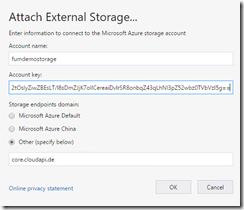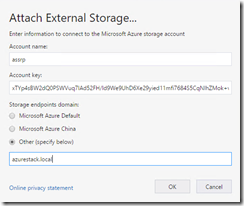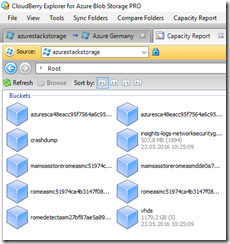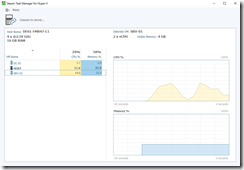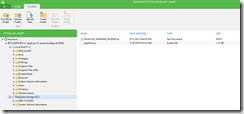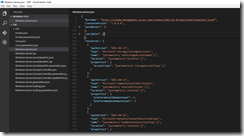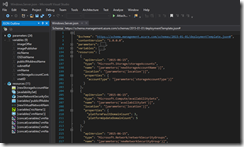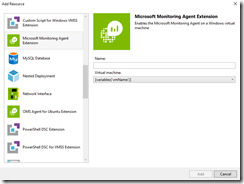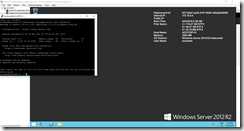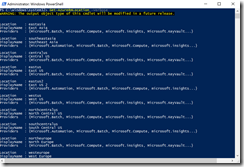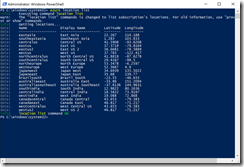When you are working with Azure or Azure Stack you have to use additional tools to keep your work easy. I would like to present some free tools, I am using at my daily work with Azure and Azure Stack
Let us start with the area storage explorer, something you want to use instead of the portal itself.
In the beginning we had the Azure Storage Explorer, a CodePlex project, that is not developed further anymore and with the rising of the latest version of Microsoft Azure Storage Explorer we do not need it anymore. So the first tool is the Microsoft Azure Storage Explorer.
If you want to access your Azure storage account, you only have to provide the blob storage endpoint URI, storage account name and the storage access key. It does not matter, if the storage account is hosted on Azure, Azure Germany or Azure Stack in your own datacenter.
The Microsoft Azure Storage Explorer supports the access to your blobs, queues, tables and files. You have actions like upload, download, copy, paste and delete. Shared access signature generation is also possible.
Really awesome is the platform support by the Microsoft Azure Storage Explorer. You can install it on Windows, Linux or OS X.
Another storage explorer comes from CloudBerry Lab. You can easily add your Azure storage accounts hosted on Azure or Azure Germany. At the time of writing this blog post you are unable to add an Azure Stack storage account. The CloudBerry Explorer only has hardcoded predefined endpoints. That is good for the Azure blob storage endpoints, but Azure Stack has no hardcoded predefined endpoints.
The CloudBerry Explorer supports the access to your blobs, queues, tables and files. Yes, you have access to Azure Files. Another really good reason for the CloudBerry Explorer is the split screen. You can have Azure blobs on the left and Azure Files on the right. Actions are likely the same. You also have upload, download, copy, paste and delete. CloudBerry has added some valuable functionalities to its storage explorer like the capacity report.
Veeam provides us with two handy tools for your on-premises Hyper-V systems and for the secure upload to your Azure VMs. The first one is the Veeam Task Manager for Hyper-V. This tool gives you an exact overview of your CPU and memory consumption of your Hyper-V host and VMs. The scenario here is that you are using the Hyper-V host for your custom OS generation like a Windows Server 2012 R2 or CentOS image for your Azure VM deployment.
Veeam FastSCP for Microsoft Azure is the tool when you want to download or upload files directly from or into your Azure VM. It is the easiest way without having a VPN connection between your on-premises network and your Azure Virtual Network. The connection is secured via HTTPS and you can schedule copy jobs.
https://www.veeam.com/fastscp-azure-vm.html
Now we are moving forward to the interesting part. The template development with ARM templates. If you know the ARM syntax, you can use every text editor you want e.g. Notepad. But this does not make fun, because you are missing very helpful functionalities like IntelliSense.
Microsoft offers two tools for free to provide you with the right tooling for ARM templates. Visual Studio Code and Visual Studio in the Community Edition.
Visual Studio Code is an editor for a whole bunch of programming languages and does not focus on ARM template editing. To get things to work you have to install the Azure Resource Manager Tools extension.
After that you can open your template files and start to edit them with IntelliSense support.
Even PowerShell is supported with the appropriate extension.
The great platform support of Windows, Linux or OS X is also given by Visual Studio Code.
If you want to use a full IDE tool for the template development, then have a look at the Visual Studio Community Edition. To get thing to work you have to install the Azure SDK for Visual Studio. Otherwise you are missing the IntelliSense support and other useful things like the Add resource function.
When you have successfully deployed your VMs in Azure, then you want to connect to them. As free tools I can recommend Putty for the connection to Linux VMs and the Remote Desktop Connection Manager for Windows VMs. If you want both in one place, have a look at Royal TS.
- http://www.putty.org/
- https://www.microsoft.com/en-us/download/details.aspx?id=44989
- https://www.royalapplications.com/ts/win/features
For uploading or downloading files into or from your Azure VMs I mentioned Veeam FastSCP earlier.
When it comes to automation and PowerShell integration you cannot miss Azure PowerShell, the Azure CLI, AzCopy and the Azure Automation.
Just to mention it, you can use Azure CLI on Windows, Linux and Mac.
- https://azure.microsoft.com/en-us/documentation/articles/powershell-install-configure/
- https://azure.microsoft.com/en-us/documentation/articles/xplat-cli-install/
- http://aka.ms/downloadazcopy
- https://github.com/azureautomation/azure-automation-ise-addon
- https://www.powershellgallery.com/packages/AzureAutomationAuthoringToolkit/
The listing is by far not complete, but it is a good start to support you with your Azure adventure!

